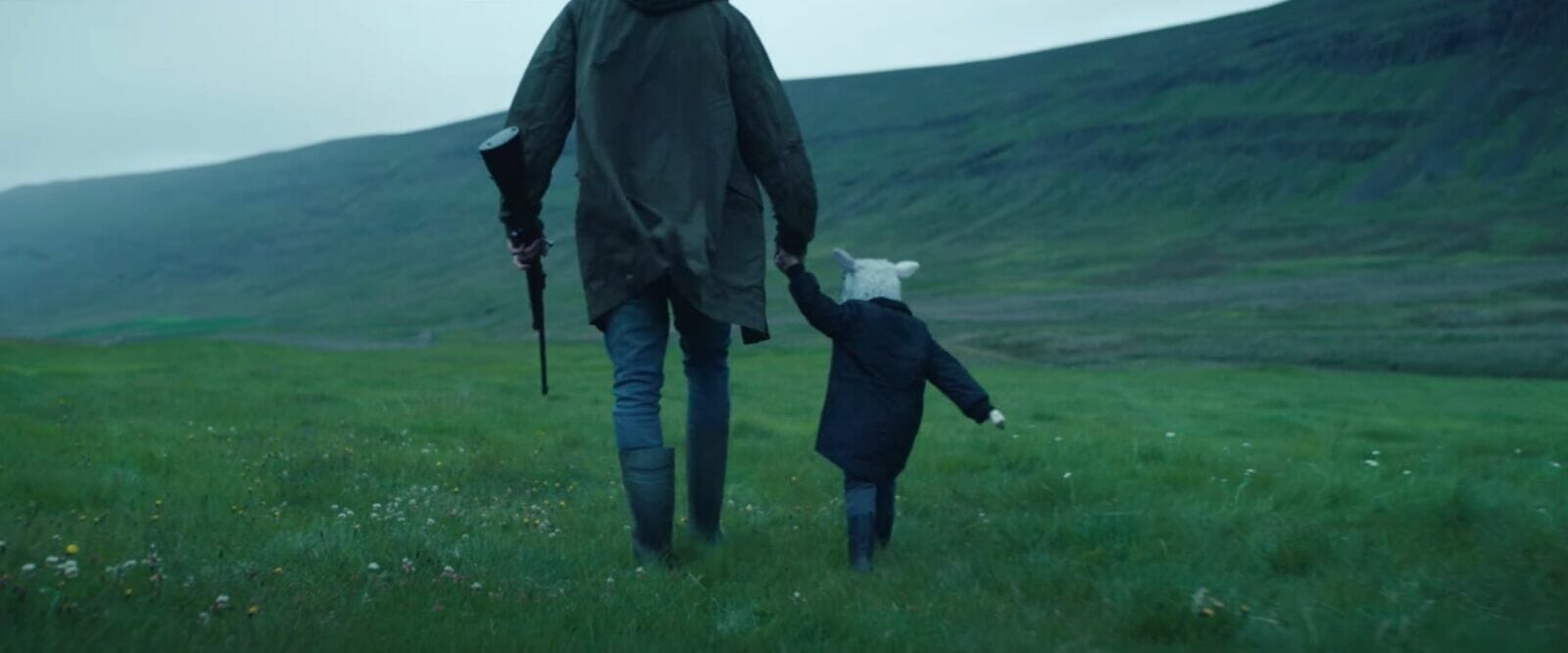In Valdimar Jóhannsson’s Lamb, humble Icelandic sheep farmers María and Ingvar get quite the shock after helping one of their ewes give birth: a creature with the head of a lamb and the body of a human (give or take a hoof). María and Ingvar take in the ungainly sight, exchange a look, and wordlessly take the creature into their home to raise as their own child. The nonchalance with which this scene is acted and directed begs some questions: was the couple prepared for this? Is the creature a metaphor for something? And—God forbid—did Ingvar impregnate a sheep?
That Lamb doesn’t bother to address this possibility for the next hour is part of its wry charm. It’s a savvy enough movie to anticipate its audience’s questions and brush them off its shoulders. A true paragon of surrealism, Lamb offers up the strangest of images with deadly seriousness and asks you to just roll with them. Never mind the baby’s origins—it’s María and Ingvar’s daughter now, and her name is Ada. Watch Ada grow; see Ada splash in the tub; smile as Ada puts on sweaters and eats cereal and goes for walks with her dad. It’s like Eraserhead doused in contented normalcy.
READ ALSO: Review: ‘No Time to Die’ is a worthy Bond movie
For the duration of its runtime, Lamb operates on two levels: the metaphorical and the dryly comical. Its pace is methodical—laborious, almost—always keeping the full meaning of its metaphor a mystery for later. This reticence keeps the film not only enigmatic but funny as well: with each minute that Lamb treats its dynamics like any other family drama, it becomes more amusing to settle into its rhythm and pretend nothing’s out of the ordinary. Jóhannsson keeps a sense of unease at the fringes—there are several shots of mist drifting eerily over the mountains, and the film has an otherworldly ability to turn sheep into nebulous, disquieting omens by layering music (or the lack thereof) over off-kilter framing—but the narrative carries on in blissful ignorance. Ingvar’s brother Pétur moves in with them and is initially disturbed by his chimeric niece, but he comes around to Ada like a dad to the cat he didn’t want. It’s hard not to: the VFX work that went into making Ada cute is pleasantly convincing.
There are hints that the central metaphor is one of nature vs. nurture. María and Ingvar anthropomorphize their daughter, accustoming her to human language and teaching her human customs; but Pétur, in his initial skepticism, tries to prove that Ada’s a mere animal by feeding her grass. There’s a lot of the film left at that point, but remarkably little is done to deepen, complicate, or subvert the nature/nurture theme from there. Lamb’s continual dodging of its concept’s weirdness goes from droll to dull—everything is just so muted, from the tone to the color grade, and the story’s simplicity starts to feel more like stalling than smirking.
The finale finally embraces the ludicrousness of it all, ending in an aptly gonzo twist that clarifies the central metaphor. But while the event is bizarre on the surface, it only reinforces how threadbare the film’s subtext is. Lamb may not end how you expect it to, but it only means what you thought it might. Anything beyond the obvious is too subdued to latch onto.
★★½ (2.5/5)




